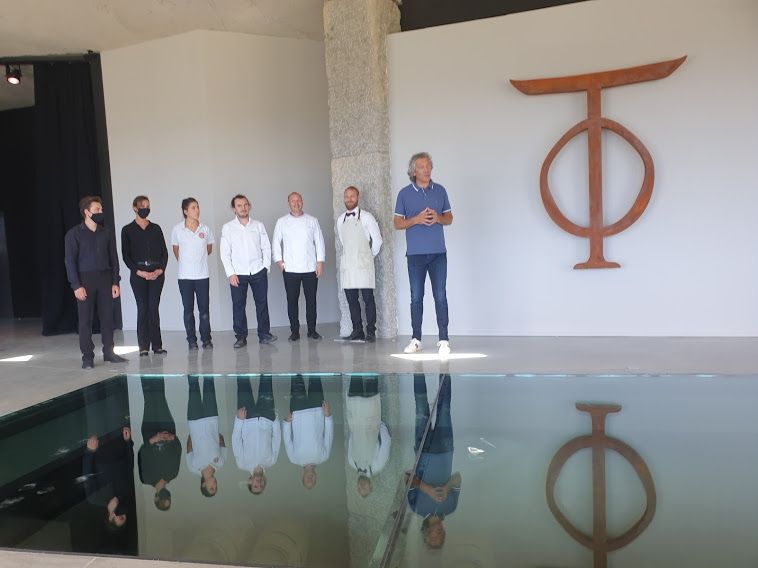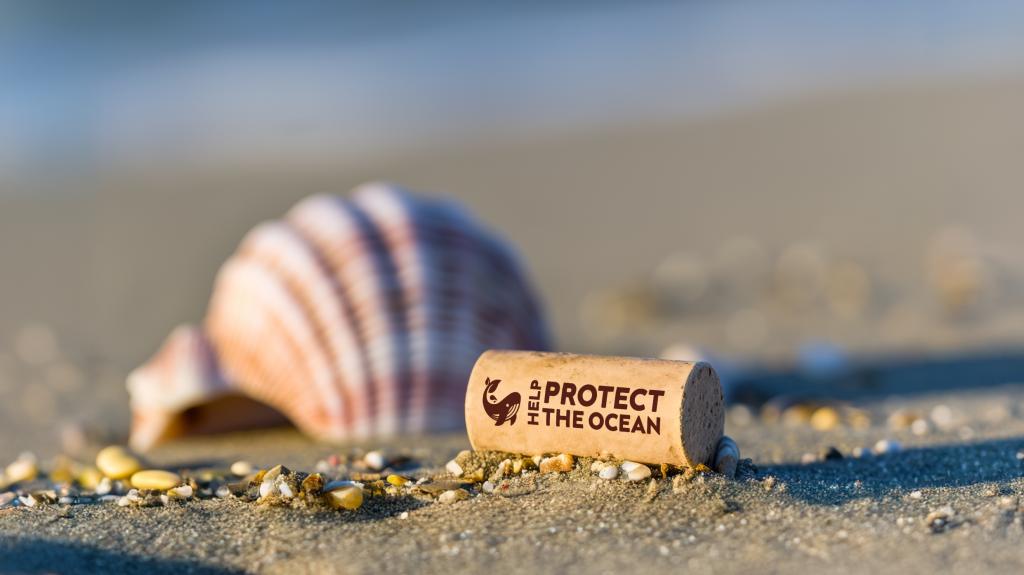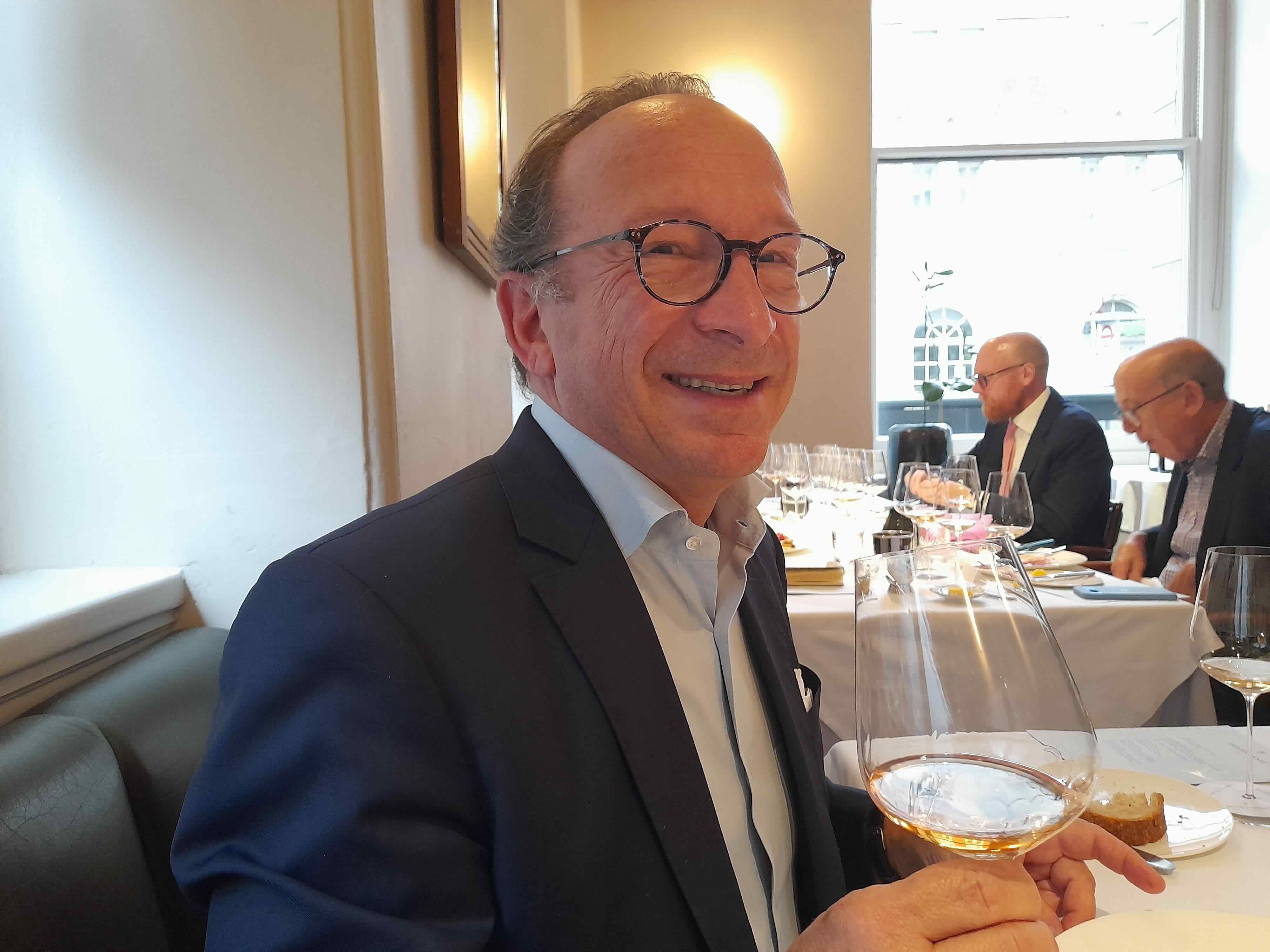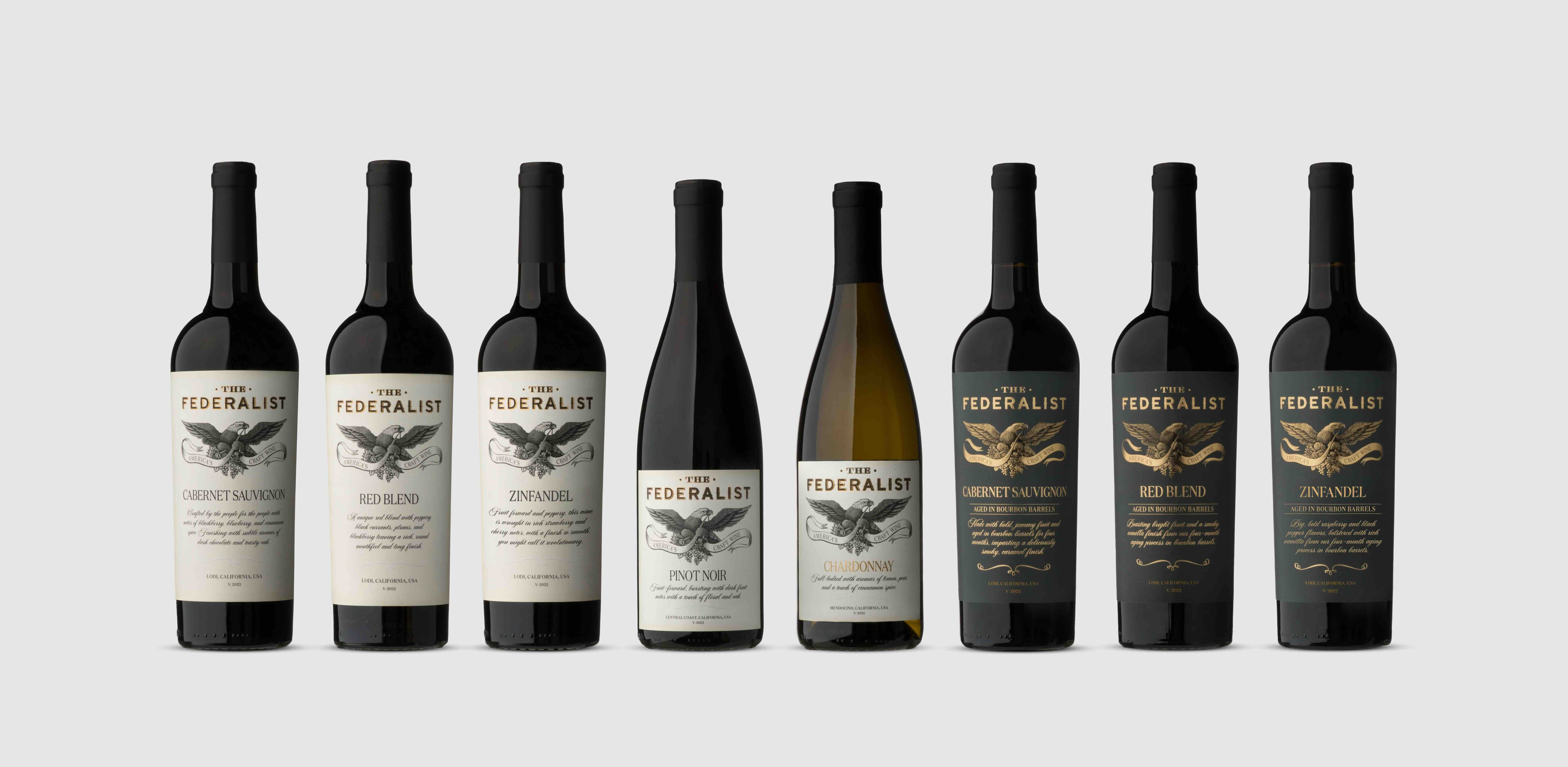“There’s none of the “easy to enjoy with friends” aspect to this rosé, you need to be concentrating to really master it,” writes Gabay.
In June 2019 Gérard Bertrand launched his new rosé Clos du Temple at a lunch at the Guy Savoy restaurant in Paris. There were some conservative raised eyebrows at the thought of anyone treating a rosé as a serious wine, but even as a young wine less than a year old, it was already showing lovely complexity and style. Bertrand announced at the lunch that his plan was to keep back some of each year’s production to allow for vertical tastings to illustrate the wines potential for ageing, something few rosé producers seem to do.
This week, on 24thJune, the Feast of St Jean, and symbolically the week of longest days and strongest sun, Bertrand unveiled the new Clos du Temple winery in Cabrières with a vertical tasting of the first three vintages at a lunch.
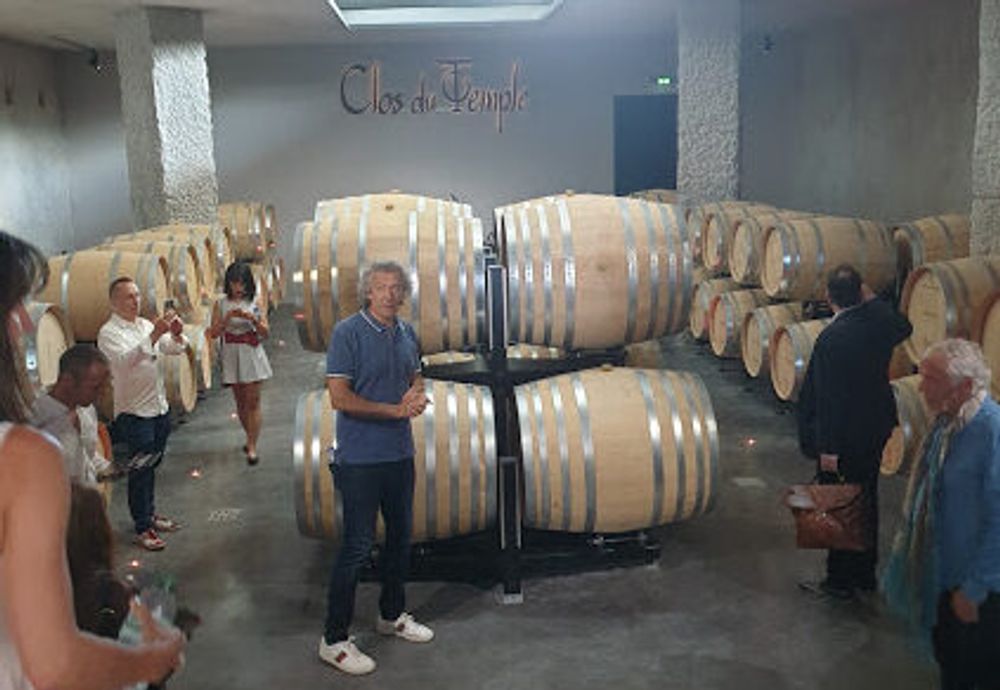
Gérard Bertrand in the new barrel room
Bertrand explained how he had read of the long history of rosé wines from Cabrières, with vin Vermeil being mentioned as far back as the 14thcentury and had visited the Cave Coopérative des Vignerons de l’Estabel to try the rosé wines. Impressed with the quality, he started to investigate further and discovered that the microclimate of small valleys, altitude, fresh springs, limestone and schist soils produced marvellous, Cinsault-based rosé.
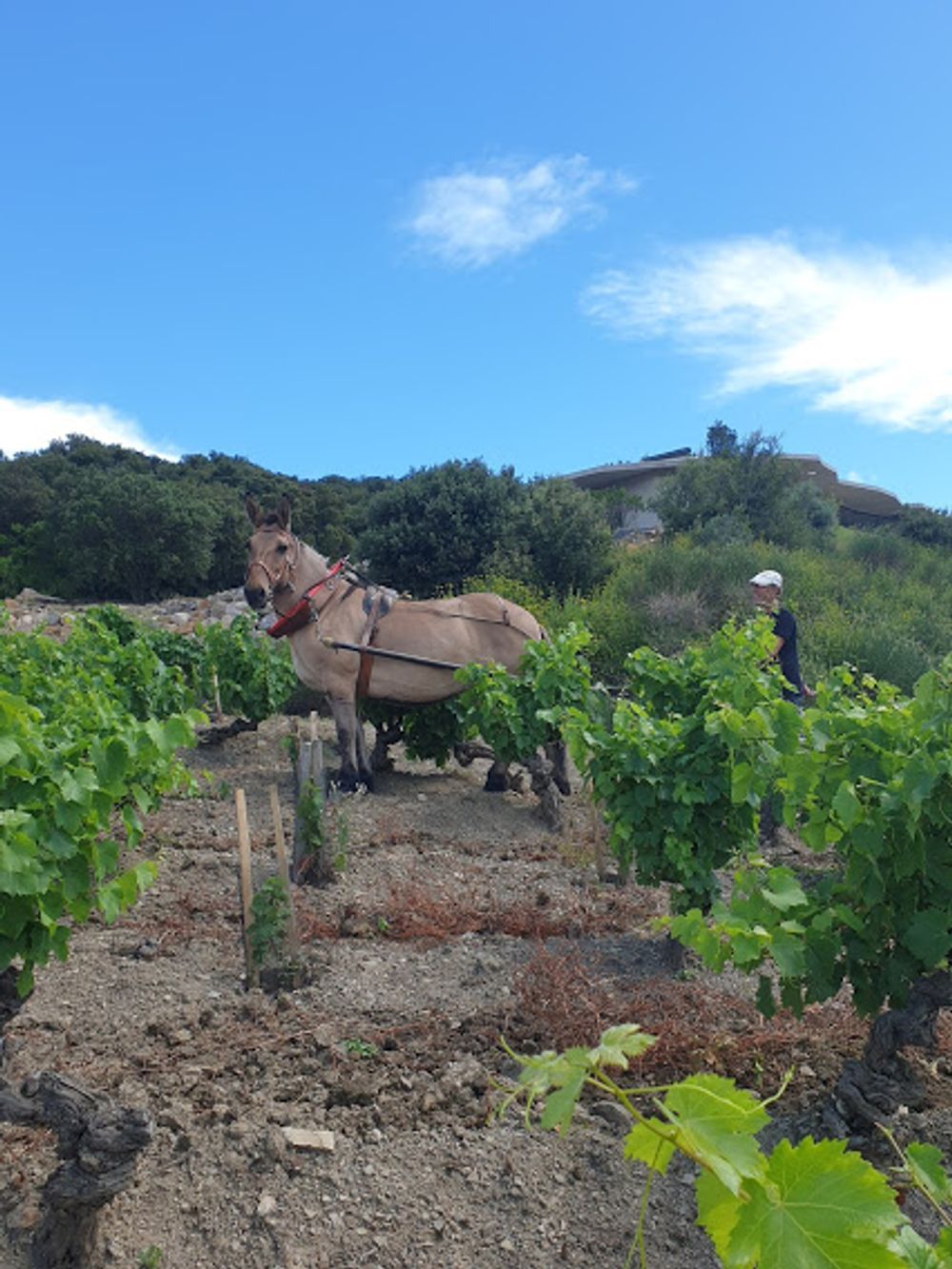
Bansaï, the vineyard mule, ploughing the biodynamic clos
Bertrand managed to buy two domaines, Domaine du Temple and Mas Valbrune which included a walled vineyard called Clos Roman. This Clos was renamed Clos du Temple and it is from this enclosed vineyard, filled with old vines averaging 50-60 years old – primarily Grenache, Cinsault, Syrah with a touch of Viognier and Mourvedre – that the blend for Clos du Temple rosé is made. The steeply sloping vineyards, at 240m facing south to south west, were converted to biodynamic viticulture and the first rosé was produced in 2017 – but it did not fulfil Bertrand’s vision for the wine and launch was delayed to the following vintage.
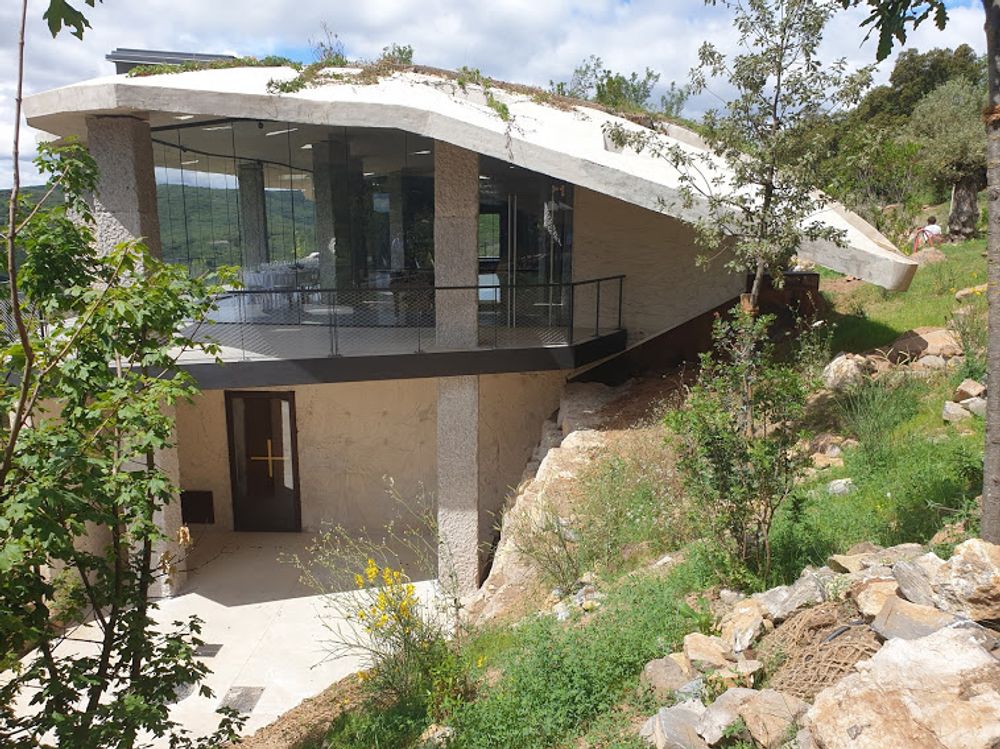
The new Clos du Temple winery
The new building was deigned by Montpellier architect François Fontès. Fontès explained how his design was inspired by a stone covered in moss and plants which would integrate into the landscape. The irregular roof shape with undulating curves has been planted with trees, grasses and flowers which will eventually hang over the edges and grow up and around the building. The cement walls are the same colour as the surrounding rocks and are impressed with the lines of tree roots. The wall overlooking the vineyards is glass surrounded by a large terrace.
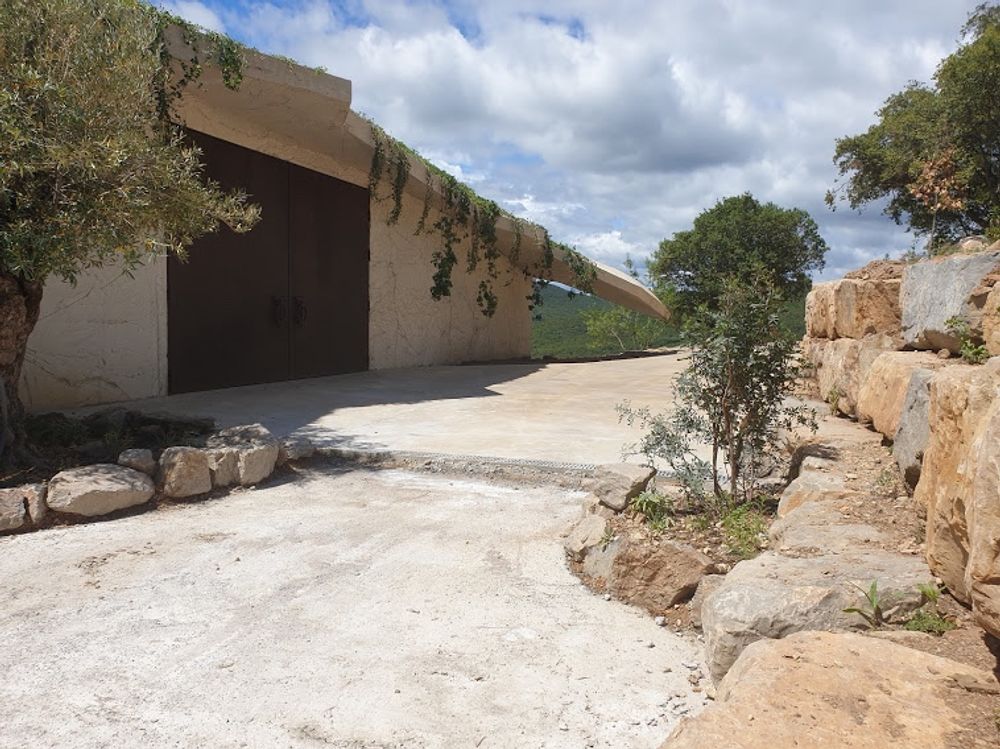
The rear – blending into the landscape
Walking up from the bottom of the clos, the building is barely visible, and for Bertrand it has the symbolism of walking up from the vines to the ‘temple’. According to Bertrand “The Clos du Temple is a celebration of life, rituals and traditions. It is the link between the terrestrial and the celestial and sets the pace of the seasons and of human labours… the unique environment of this place creates an alchemy and a spiritual impetus.”
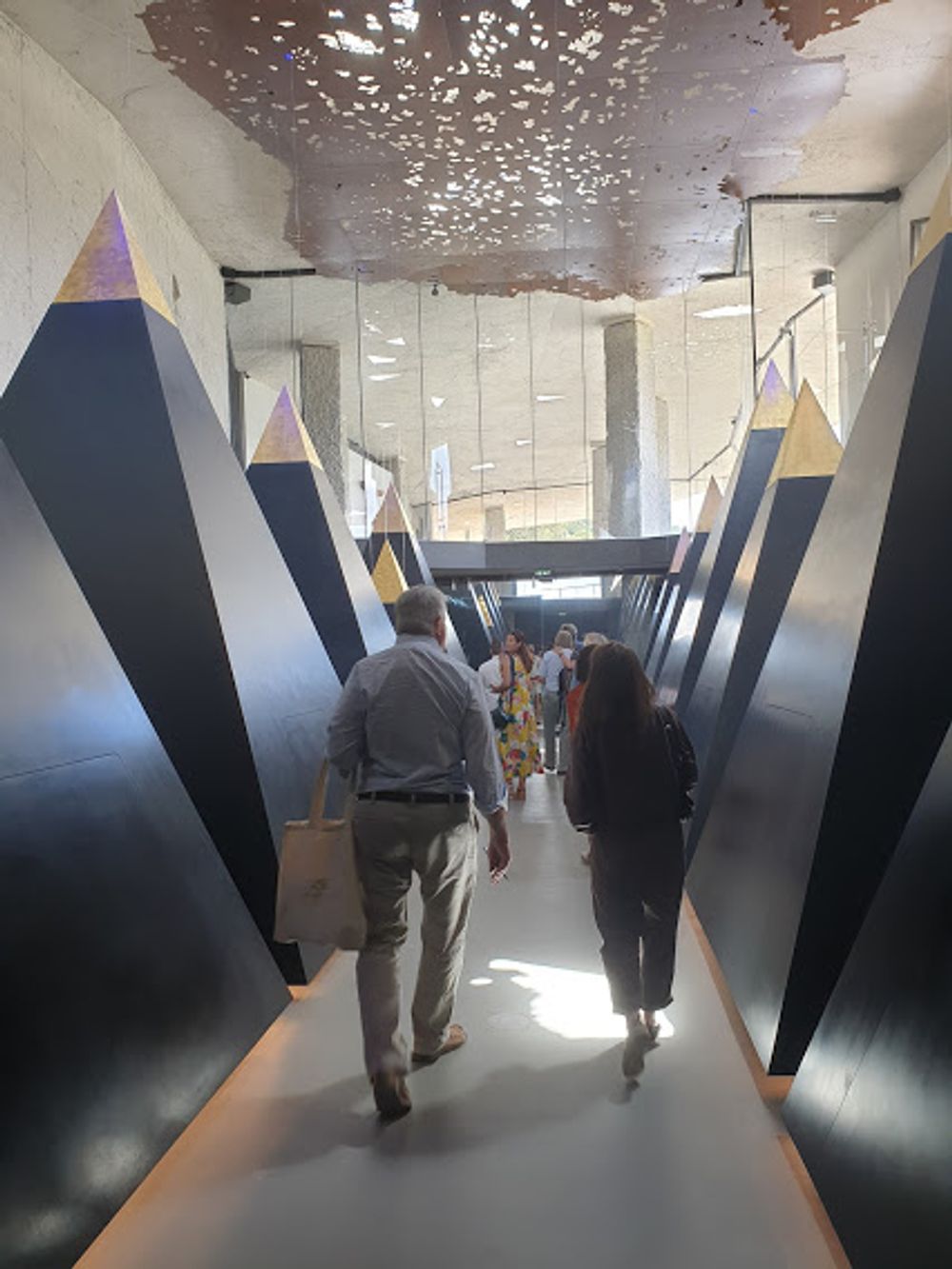
The grand entrance
Walking inside, we descended, to impressive choral music, to a large room filled with pyramids, of varying heights, with gold tips, which catches the rays of the sun it moves round during the day. The barrel room was full of French barriques and Stockinger demi-muids of varying ages, mounted on barrel rollers to allow for battonage without opening the barrel which increases oxidation and the need for sulphur. The rosé spends 6 to 8 months in barrel depending on the vintage. A glass ceiling opened up to the hall above.
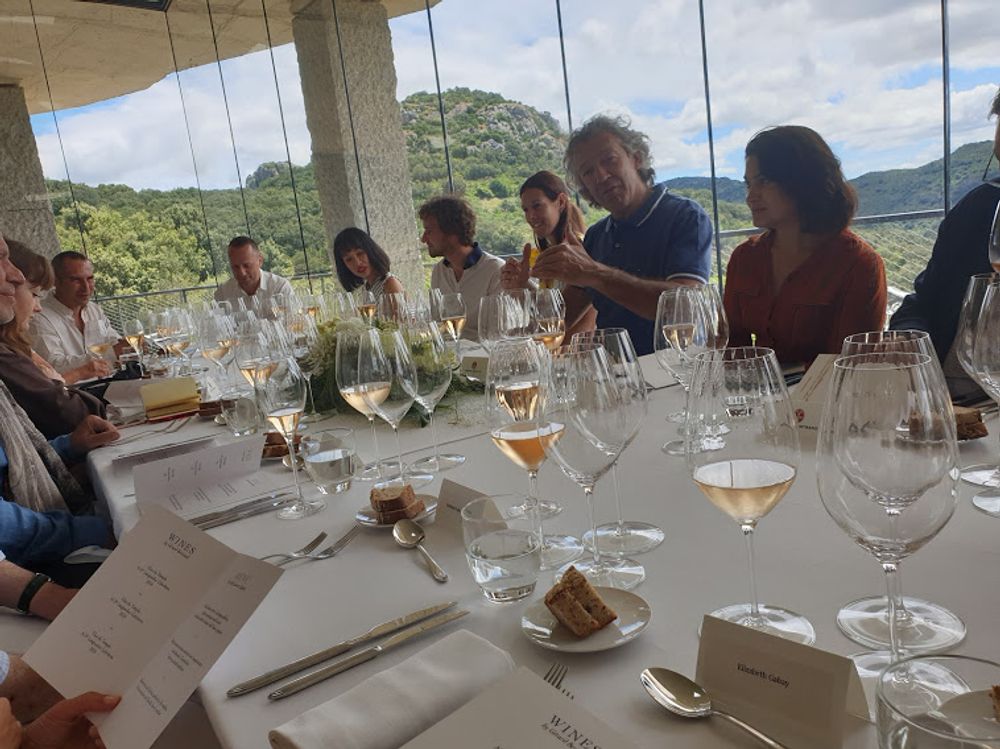
Gérard Bertrand holds court during lunch
Upstairs in the reception room, to be used to entertain invitees and not intended for the general public, we looked down on the pyramids and into the barrel room, and from the terrace over the vineyards and surrounding hills, listening to Carmina Burana and sipping Ballerina – a sparkling rosé from Bertrand’s Limoux estate, that had had 48 months on lees and one year in bottle.
And then on to lunch and the tasting.
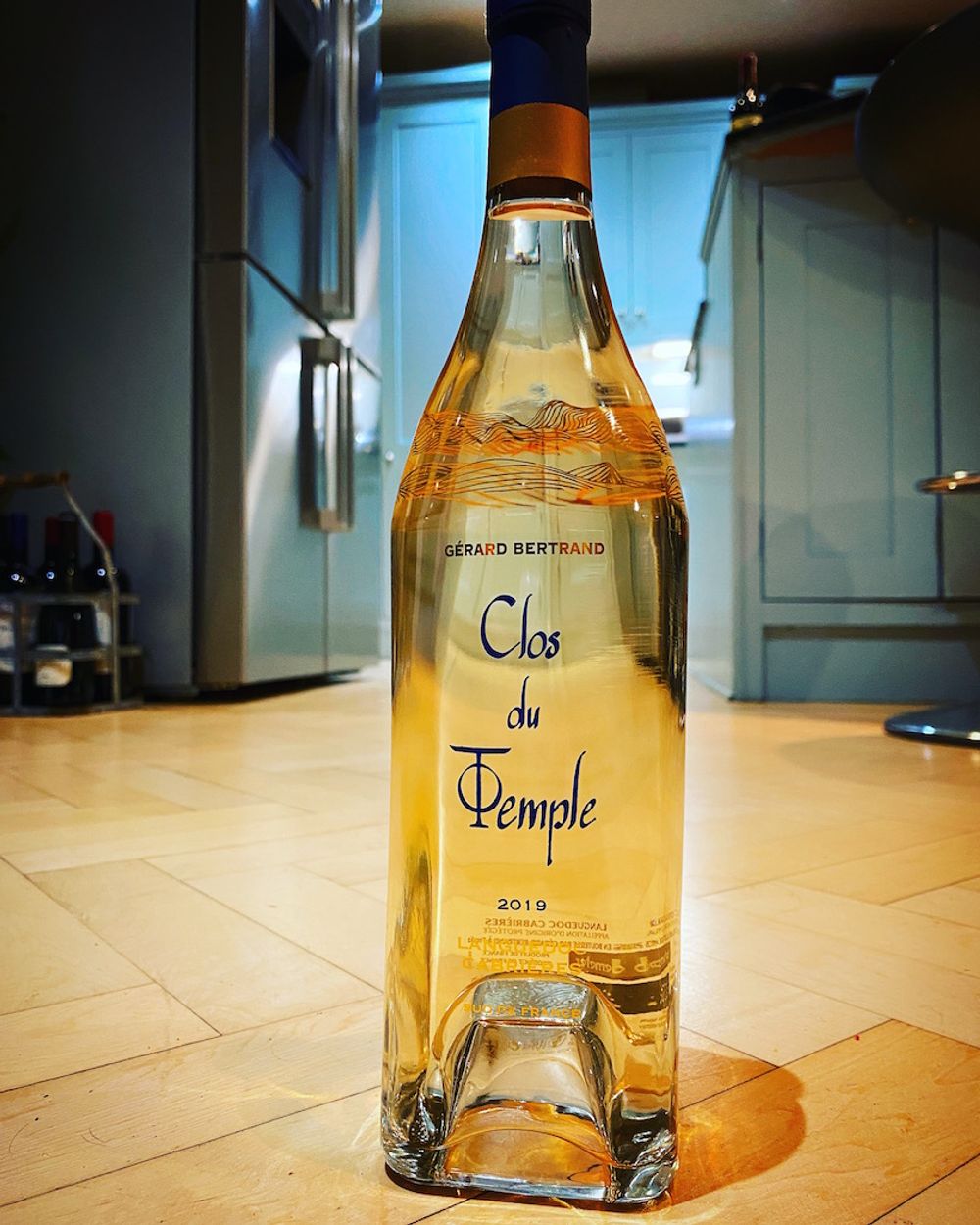
The Clos du Temple bottle, designed by Marie Legallet has a square base with a punt that is shaped like a pyramid and measures up to the golden ratio. The gold design round the neck is a picture of the hills surrounding the vineyards. A ribbed Riedel glass is the chosen glass to serve the rosé.
For the lunch, the 2018 vintage was served with the signature lobster and Timut pepper dish created by Guy Savoy for the inaugural lunch back in 2019 to match the ripe creamy fruit with the saline freshness. The 2019 with sea bass and girolles which beautifully paired with the more structural character of the vintage. The 2020, with its red fruit character made an amazing surprise combination with morello cherries sauteed in Clos du Temple and served in a clafoutis. Who would have thought a dry rosé would go so well with a dessert?
So what do the three vintages of Clos du Temple taste like?
For my Buyer’s Guide to the Rosés of Southern France I had tasted all three vintages with greater detail in the first published report of a vertical tasting of Clos du Temple.
There was significant vintage variation between the three years. The basic winemaking remains the same, with hand-harvesting of each plot according to the ripeness of the variety. Free run juice from each variety is selected, fermented at low temperatures. However, from the 2019 vintage, the grapes, Grenache Noir, Cinsault, Mourvèdre, Syrah, and Viognier, were chilled in refrigerated containers after harvesting aiming to preserve freshness, aromas and a pale colour. Fermented and partially aged in barrel, the 2020 had more wine aged in 500l barrels and with a little more Syrah for extra minerality.
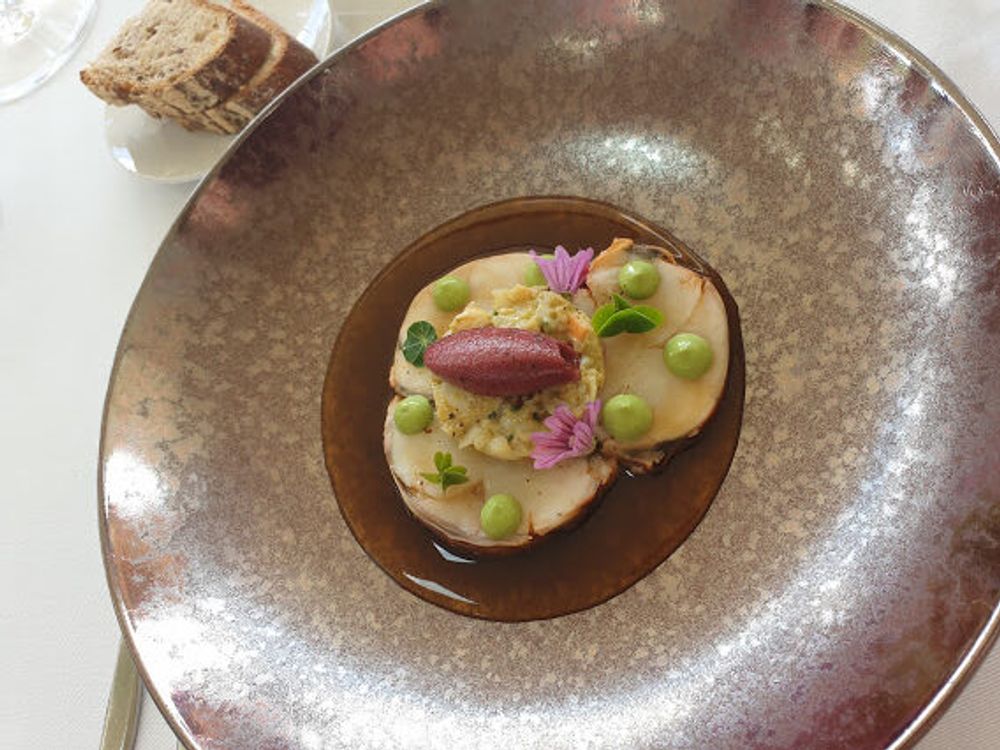
Lobster and Timut pepper, created by Guy Savoy, aired with Clos du Temple 2018
Clos du Temple 2018
Creamy white. Gentle honeyed oak aromas with a hint of beeswax and violets. The rich honeyed oak continues on the palate but is beginning to take the back seat to delicate notes of fresh, zippy redcurrants, ripe raspberries, reminding you that this is a rosé, coming to the fore. Not a fruit-driven wine, but the smooth, silky ripeness and extraction give a lovely weight, intensity, and velvety texture. There is a long mineral length and mouth-watering acidity (those redcurrants just keep going) on the finish supporting the plush richness. A classically elegant wine which is still fresh and youthful and has the potential for long ageing.
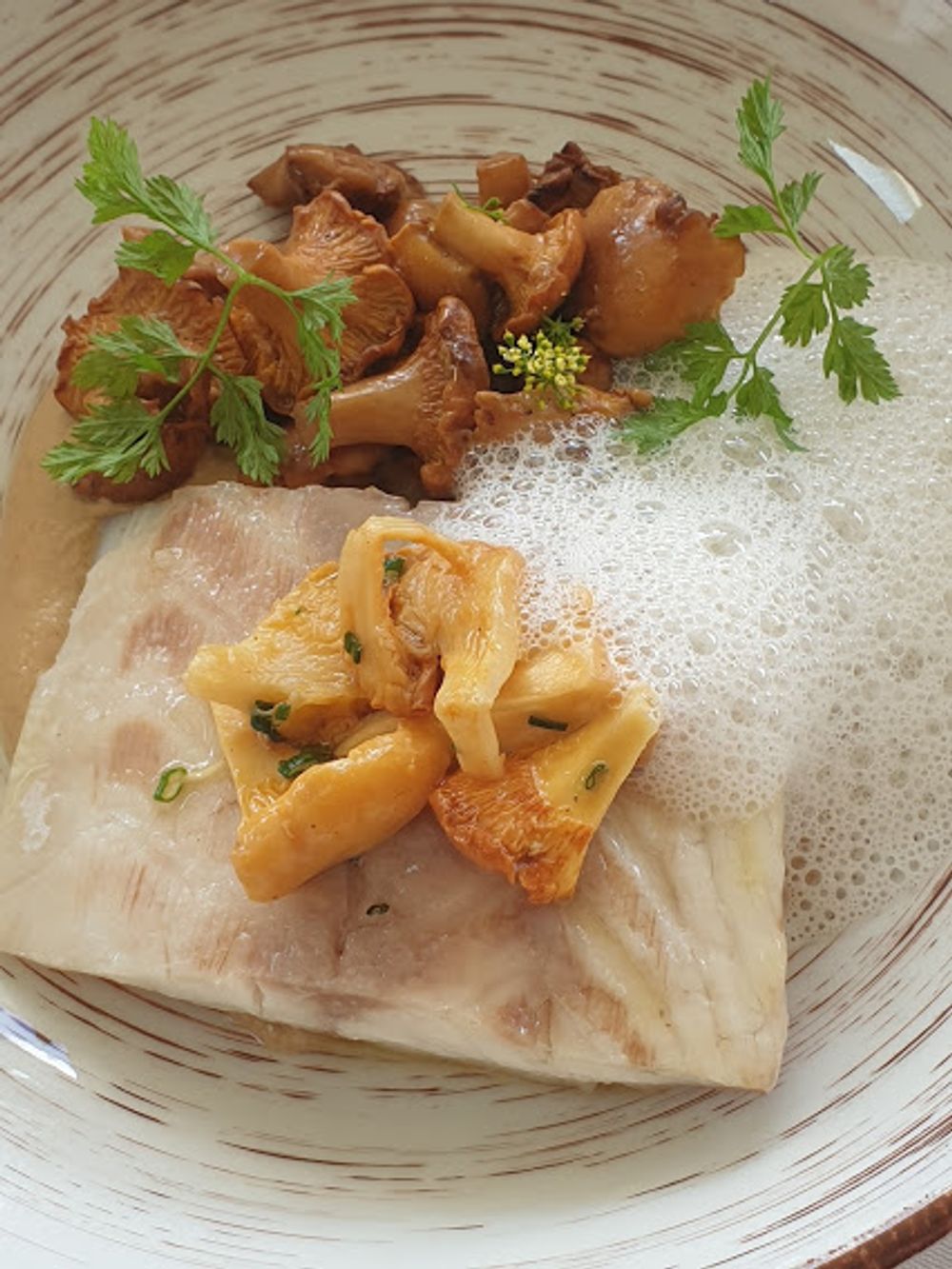
Sea bass with wild mushrooms, paired with Clos du Temple 2019
Clos du Temple 2019
More creamy yellow in colour. More intense honeyed oak aromas. This vintage was much more intense everywhere, and this wine is no exception. A very intense, powerful, almost masculine wine. Much fuller body, riper, slightly sweet black fruit with dark, sour cherries and violets discreetly hiding in the background, with slightly leafy, chalky freshness. Some darker minerality and structure gives an intensity to the black fruit and a muscular tautness. The acidity is mouth-watering with a saline length. An intensely grippy finish with a certain richness and an almost intimidating dark intensity. A wine which sums up the potential for this style of premium rosé which has the elegance of a fine white wine with the intensity of black fruit.
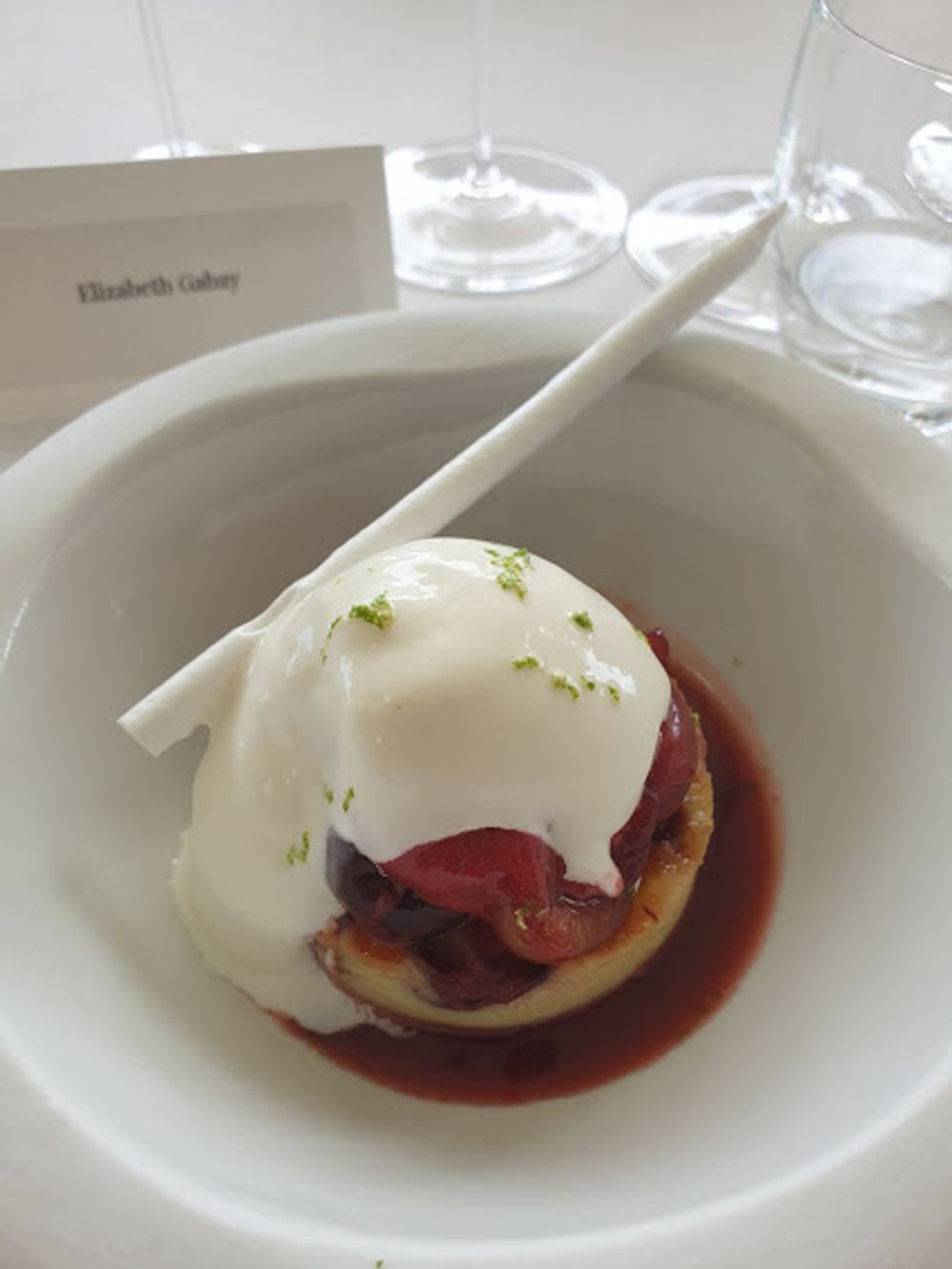
Morello cherries sautéed in 2020 Clos du Temple
Clos du Temple 2020
Paler yellow white. Pretty almond blossom aromas which continue on the palate with fresh, floral, violets, rose petal prettiness, rose water and orange blossom notes – wondering if this is the Cinsault and Viognier coming to the fore. The oak is seamlessly integrated with hints of bitter almonds, giving almost invisible weight. Fresh red berry fruit and rosehips is intensely ripe and rather luscious, countered by long saline minerality (that extra amount of Syrah) and mouth-watering, grippy acidity. The wine is still youthful, with the sheer strength of fruit and extraction making it a serious wine. There’s none of the “easy to enjoy with friends” aspect to this rosé, you need to be concentrating to really master it. The wine is perfectly balanced with the component parts exceptionally well-integrated, but still youthful.
Clos du Temple retails at over £190 per bottle.

Elizabeth Gabay’s ‘Buyer’s Guide to the Rosés of Southern France’ is available to buy here at the price of £18 (€20/ $24), The guide is supplied in the form of a PDF file, downloaded after purchase. Readers of The Buyer can obtain a discount of 20% until 15 July by using the coupon code THEBUYER.
The guide is 293 pages long and includes tasting notes for over 830 rosés from southern France, the best of the almost 1000 tasted. Of these, 20 are rated “Outstanding” and 176 “Highly Recommended”. With each tasting note are details of each wine, a contact email address and, for some, importer details.
